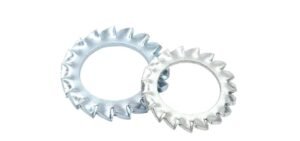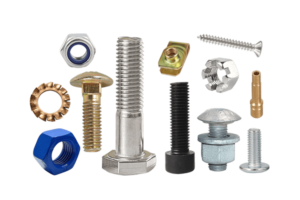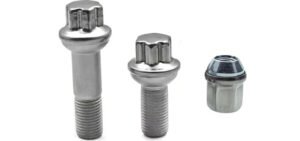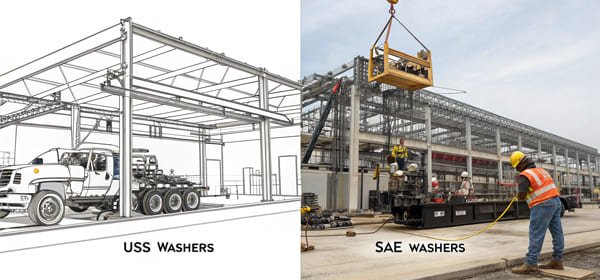
When sourcing flat washers for mechanical assemblies, it is critical to select the appropriate washer type based on dimensional compatibility, load distribution, and application requirements. Two of the most commonly used flat washer standards in North America are U.S.S. (United States Standard) and SAE (Society of Automotive Engineers). While these washers may appear similar at a glance, they differ in both size and application. Using the wrong washer type can lead to issues such as improper fit, uneven load distribution, or even premature fastener failure.
U.S.S. flat washers are characterized by their larger outer diameter and increased thickness compared to SAE washers. They are typically used in heavy-duty or structural applications involving larger bolts, where broader load distribution is required. SAE flat washers, on the other hand, have a smaller outer diameter and are thinner, making them suitable for use in automotive and general-purpose applications where space and weight are more restricted.
The dimensional differences between these two standards are consistent across various bolt sizes. For example, a 1/2″ USS washer typically has an outside diameter of approximately 1.38 inches and a thickness of around 0.109 inches, while a 1/2″ SAE washer has a smaller outer diameter of about 1.06 inches and a slightly thinner profile, roughly 0.093 inches thick. The inside diameter on SAE washers is also slightly tighter, offering a closer fit to the bolt.
While this dimensional difference is the most noticeable, it’s important to understand what these terms actually represent. The following sections explain the origin and definition of each standard.
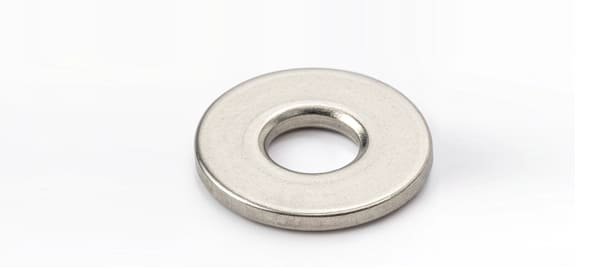
What does “USS” mean on a flat washer?
USS stands for United States Standard, a washer pattern originally developed for industrial and military applications in the U.S. The USS designation refers to a dimensional standard characterized by a wider outside diameter and thicker body compared to other washers. These features enable USS washers to distribute pressure over a larger surface area, minimizing surface deformation on softer materials. USS washers are frequently used in construction, energy infrastructure, steel structures, and similar applications where bolt loading is high.
What does “SAE” mean in washers?
SAE refers to the Society of Automotive Engineers, which standardizes components for use in the automotive and mechanical industries. SAE flat washers are designed with smaller outside diameters and thinner profiles. They are intended for use with fine-thread bolts and in assemblies where compactness is important. SAE washers are commonly used in applications such as automotive assemblies, machine tools, and electrical enclosures. Their smaller size allows for better fit in tight assemblies without compromising functionality.
What is the difference between F436 and SAE washers?
The key difference is that F436 is a material and performance standard, while SAE is a dimensional standard.
ASTM F436 washers are made from hardened steel and are heat-treated for use in high-strength structural connections, typically with A325 or A490 structural bolts. These washers may follow USS or SAE dimensions but are manufactured to meet strict mechanical performance requirements. SAE washers, unless otherwise specified, are not hardened and are generally used in non-structural applications.
What is the difference between USS and F436 washers?
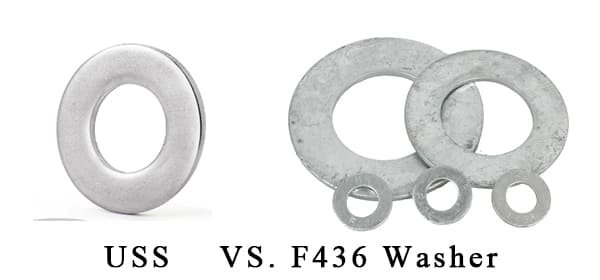
USS refers to the dimensional pattern—larger outer diameter and thicker profile—while F436 refers to mechanical performance, including minimum hardness and heat treatment.
A washer can be F436-grade with USS dimensions, meaning it provides both the structural strength of F436 and the surface area coverage of a USS pattern. These are commonly used in steel construction and other load-bearing installations.
What is the difference between Type A and Type B flat washers?
Buyers often ask how Type A and Type B washers compare to SAE and USS. Type A and Type B refer to manufacturing tolerance classifications, not dimensional standards. Type A washers are general-purpose washers with broader manufacturing tolerances. Type B washers are made to tighter tolerances and are further divided by the range of outer diameters: narrow, regular, or wide.
Type A washers may follow USS dimensions, while Type B washers may follow SAE or custom specifications depending on the application. If tight clearance or alignment is critical in your assembly, Type B is generally preferred.
SAE vs USS Washer Dimensions – Reference Chart
The chart below compares standard SAE and USS washers at several common bolt sizes:
| Nominal Bolt Size | SAE OD (in) | USS OD (in) | SAE Thickness (in) | USS Thickness (in) |
|---|---|---|---|---|
| 3/8″ | 0.88″ | 1.00″ | ~0.065″ | ~0.074″ |
| 1/2″ | 1.06″ | 1.38″ | ~0.093″ | ~0.109″ |
| 5/8″ | 1.25″ | 1.75″ | ~0.109″ | ~0.136″ |
These values may vary slightly by manufacturer but represent the standard pattern used across North America.
Which has tighter tolerances—SAE or USS washers?
Neither SAE nor USS directly defines tolerance level. They are dimensional patterns, not tolerance grades. If your application requires tighter manufacturing tolerances, consider specifying Type B washers in either SAE or USS patterns. This ensures consistency in outer and inner diameter as well as thickness.
Why does outer diameter matter in flat washers?
Outer diameter (OD) determines the load-bearing surface area of the washer. A larger OD, as in USS washers, spreads the bolt load over a greater area, which is useful when working with softer base materials or under high clamping forces. Smaller OD washers, like those in the SAE pattern, reduce interference in tight spaces and are appropriate when load distribution is less critical.

How do I choose between USS and SAE washers for my application?
The choice depends on your specific application. Use USS washers if:
- Load distribution is important
- You are working with structural or large-diameter bolts
- Surface protection under vibration is required
Use SAE washers if:
- Space constraints exist
- You are assembling fine-thread bolts
- The application involves automotive or light mechanical use
When uncertain, refer to engineering specifications or consult your supplier to match the washer type to your project requirements.
Can both USS and SAE washers be supplied from a Chinese manufacturer?
Yes. At Shanghai Hengrui Industry Co., Ltd., we manufacture and export both USS and SAE washers in accordance with IFI, ASTM, and SAE standards. Our washers are available in a variety of materials, finishes, and packaging formats to suit different international markets. We supply to clients in the United States, Canada, Germany, South Korea, and other regions, supporting OEM, wholesale, and government contracts.
What are the risks of ordering the wrong washer type from overseas suppliers?
Ordering the incorrect washer type—USS instead of SAE or vice versa—can result in improper fit, assembly misalignment, or failure to meet design specifications. This can lead to rejected shipments, site delays, or even project inspection issues.
To mitigate these risks, international buyers should:
- Clearly specify washer standard (USS or SAE)
- Verify dimensional drawings with the supplier
- Confirm applicable material or performance grades (e.g., F436)
- Request sample approval before mass production
Shanghai Hengrui Industry Co., Ltd. provides technical documentation and inspection reports upon request. We manufacture and export SAE, USS, and F436 washers, and can also provide custom-stamped washers and non-standard fastener components.
Conclusion
Understanding the differences between USS and SAE washers is essential for ensuring fastener compatibility and assembly performance. USS washers offer greater load distribution for structural applications, while SAE washers are compact and suited for lighter-duty uses. By selecting the correct washer standard and verifying dimensional and material specifications with your supplier, you can reduce the risk of installation failure and ensure project success.
Contact Hengrui Fastener for Custom Washer
For specialized applications that require custom solutions, Hengrui Fastener offers high-quality, customizable washer and fasteners. Whether you need a specific size, material, or finish, Hengrui can provide tailored fasteners to meet your exact requirements. Contact Hengrui Fastener to learn more about our products and services.



